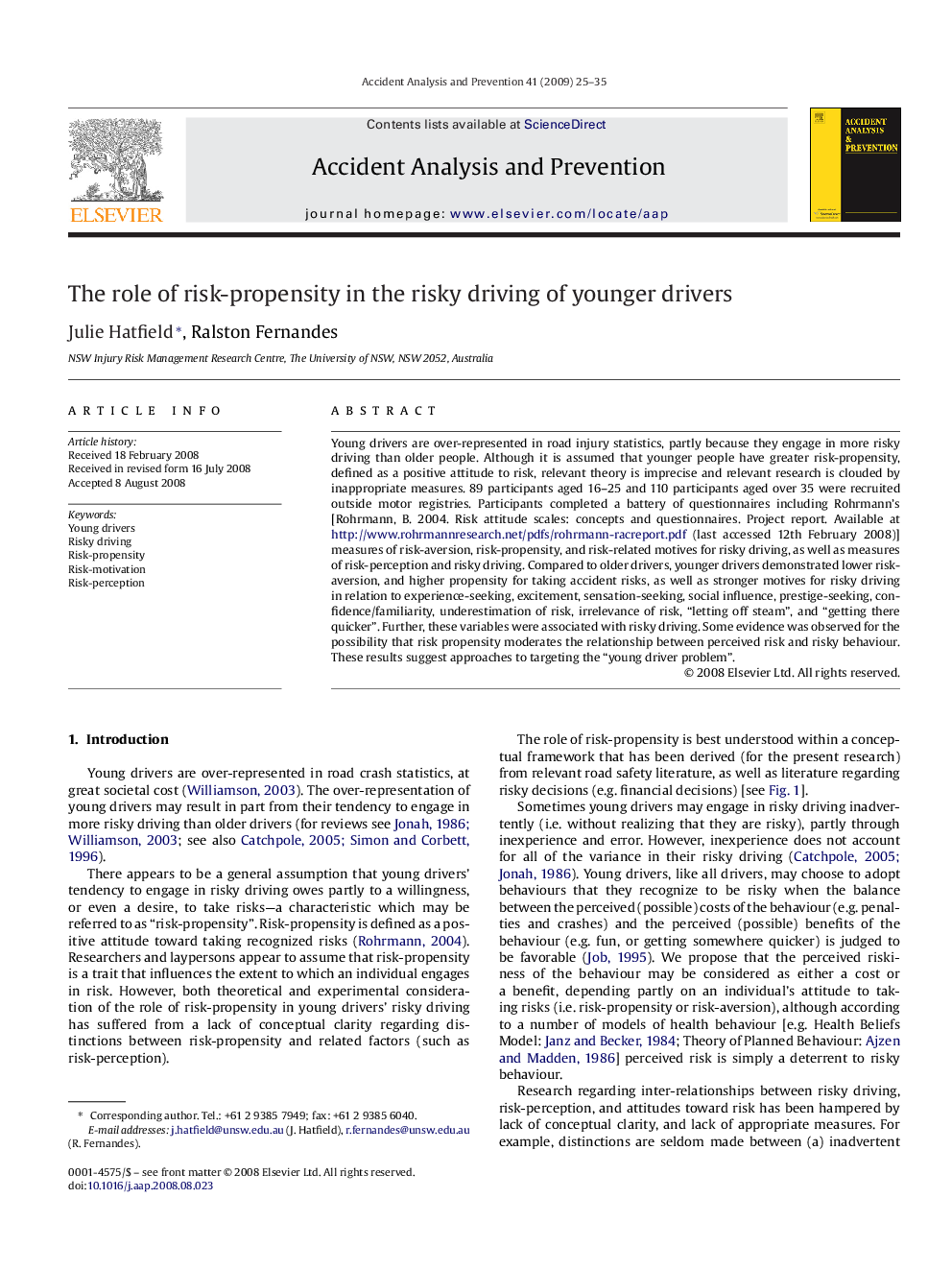| Article ID | Journal | Published Year | Pages | File Type |
|---|---|---|---|---|
| 573537 | Accident Analysis & Prevention | 2009 | 11 Pages |
Young drivers are over-represented in road injury statistics, partly because they engage in more risky driving than older people. Although it is assumed that younger people have greater risk-propensity, defined as a positive attitude to risk, relevant theory is imprecise and relevant research is clouded by inappropriate measures. 89 participants aged 16–25 and 110 participants aged over 35 were recruited outside motor registries. Participants completed a battery of questionnaires including Rohrmann’s [Rohrmann, B. 2004. Risk attitude scales: concepts and questionnaires. Project report. Available at http://www.rohrmannresearch.net/pdfs/rohrmann-racreport.pdf (last accessed 12th February 2008)] measures of risk-aversion, risk-propensity, and risk-related motives for risky driving, as well as measures of risk-perception and risky driving. Compared to older drivers, younger drivers demonstrated lower risk-aversion, and higher propensity for taking accident risks, as well as stronger motives for risky driving in relation to experience-seeking, excitement, sensation-seeking, social influence, prestige-seeking, confidence/familiarity, underestimation of risk, irrelevance of risk, “letting off steam”, and “getting there quicker”. Further, these variables were associated with risky driving. Some evidence was observed for the possibility that risk propensity moderates the relationship between perceived risk and risky behaviour. These results suggest approaches to targeting the “young driver problem”.
